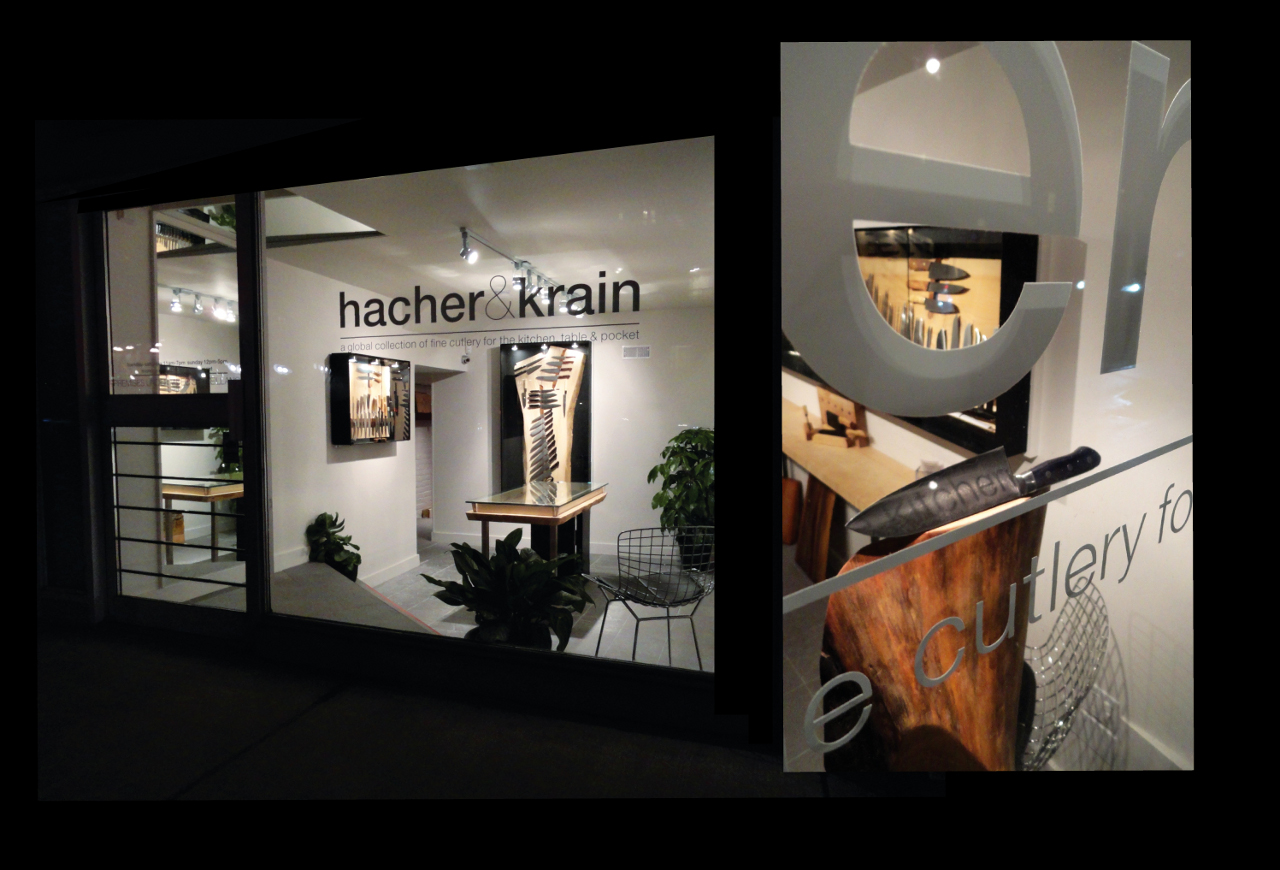



please scroll down
or use the arrow keys, PgUp, PgDn,
and Home to navigate
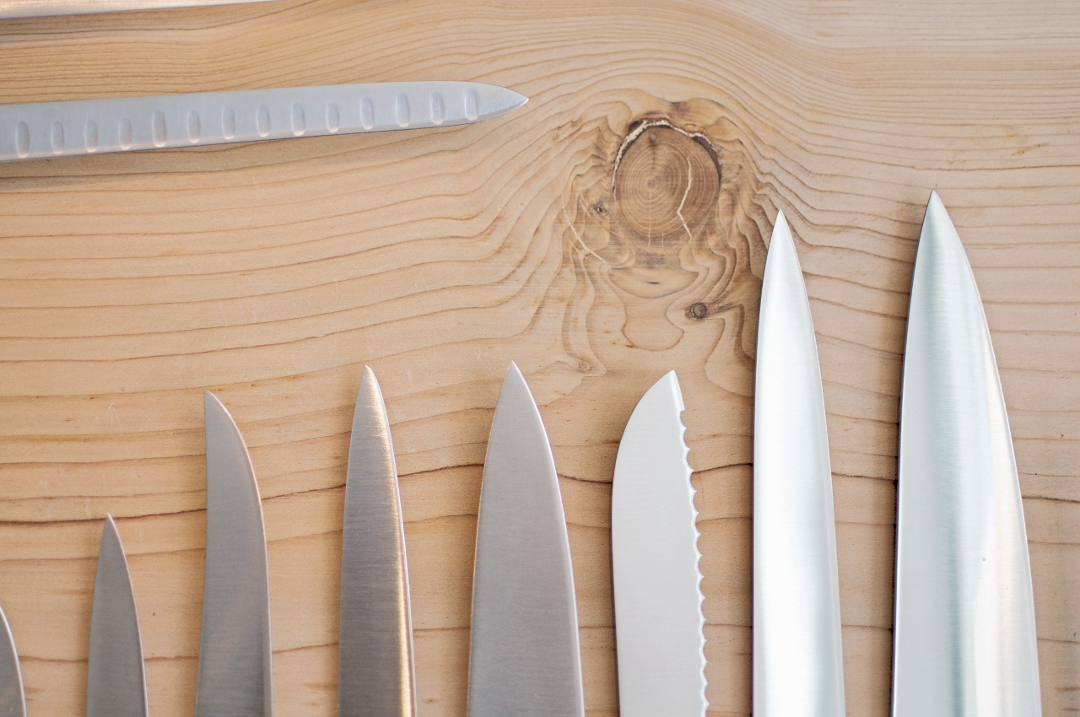
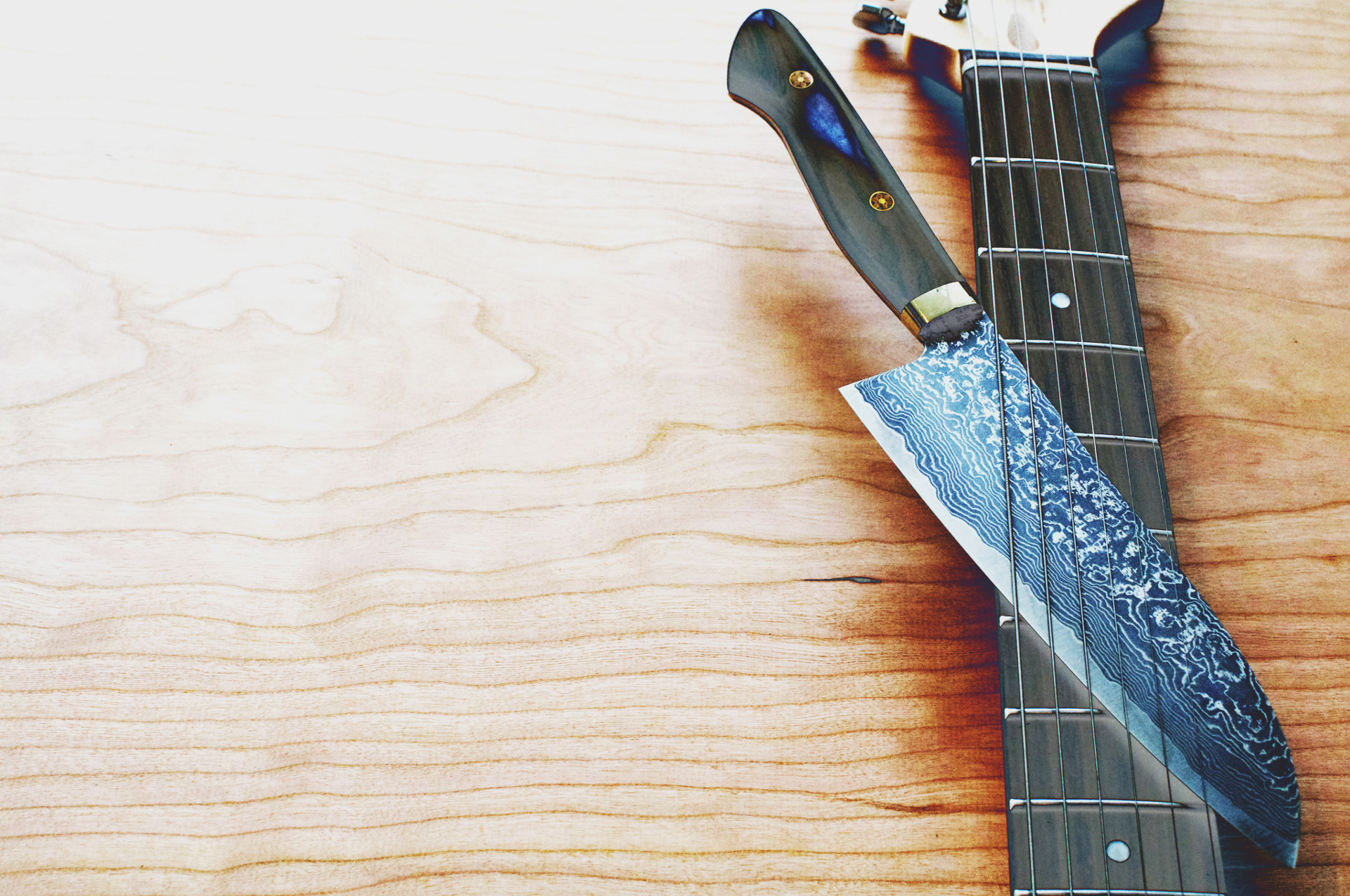
Thank you: Robert Johnson, Blind Willie McTell, Howlin Wolf, Joseph Spence, Segovia, Frank Zappa, Ry Cooder, Elvis, Bruce and Bob.
In the past 25 years there has been an explosion of interest in great cuisine created by a new generation of skilled chefs passionate and demanding of the quality of their ingredients and their tools. So, it's no surprise that a knife culture like food culture has developed. One could say that food is the new rock 'n' roll, making knives the new guitars.
Given the explosion of knife culture, it is only natural that it also has its attributed hype, fashion, and trends. Fashion says that some knives are greater than others, but the good/better/best marketing approach to this fundamental tool may have more to do with hype than reason.
It is often forgotten that it is France and Germany who are responsible for the development of the two culinary knife styles that have shaped our cutlery world. During the later part of the nineteenth century Germany mechanized culinary knife production, its manufacture, and international sales infrastructure. Naturally, German cuisine had been driving the design of its big-bellied heavy knife, making it a perfect rocking machine. Solingen Germany was and is still the heart of the German knife industry and its companies, all of who participated in the development of the German knife style.
Different from Germany, the French knife was designed and developed by an individual, Philippe Sabatier, in the 1820s. Designed for an economy of movement, his knife has a more graceful blade shape creating a more solid contact cutting edge that is balanced by a shaped handle. It was his design that was embraced by arguably Europe's most complex cuisine.
The Puy-de-Dôme department of Auvergne in central France is home to the small town of Bellevue in the mountains surrounding Thiers. There Philippe Sabatier developed the knife style that France called their own and by the 1840s other French knife makers began to copy. By as early as the 1860s Sabatier’s knife was also being copied by the German and English makers.
When Sabatier first began to sell his knives the majority of his customers were illiterate so he registered the letter "K" to identify just his knives. This began the tradition that continues today where pretenders use a variety of names before or after the family name Sabatier. So great was Sabatier's influence that word Sabatier confirms the French style of culinary knives in the same manner as Bandaid or Kleenex refers to the whole of a product type.
While Germany and its many knife companies sold knives to the world, France made knives for the world. Yet, there is no question that other European countries have contributed to our culinary cutlery traditions mostly by creating knives designed for specific cutlery tasks. Important contributions have been made by Spain; when it comes to cleavers for fish and meat, Spain is the most diverse and creative, in that designs change dramatically from city to city and region to region. The Scandinavian countries have advanced steel quality and blade type in their approach to filleting and field knives. England, the father of industrialization, copied everyone, refining steel and its production. In terms of design, it enhanced slicing knives for meats, which lead to their inspired approach of packaging carving sets. Italy developed extremely deep bladed knives used to cut pasta and a variety of finely designed task-specific knives for different types of cheeses, cakes and dried meats that are themselves copied by others.
Many other countries throughout the world have developed a variety of task-specific knives related to the culinary arts of their nations. Knives are made for fruits, grains, nuts, meats, and fish; there are a great many shapes and styles. Only China is known globally for a single blade shape for all of its cuisine. The Chinese cleaver (Csai/Tsai Dao) is made in a number of different blade types for a variety of different tasks. But, no matter the task of the blade or its different sizes, blade thickness, or blade depth, the iconic rectangular shape is ever present.
Japan must be recognized and respected for its completely unique approach to its nations culinary knife tradition. Of all nations who have developed culinary knife designs specific for its cuisine, Japan’s expression is unique, highly stylized, and practiced at the highest level of craftsmanship.
Unfortunately, during the later half of the twentieth century western kitchens lost contact with the sense of craftsmanship and the artisan's ability to leave behind the human touch. The Japanese did not miss this opportunity when, after the Second World War, they retooled their industrial base and companies able to make knives looked outward to world markets.
All the Japanese knife makers had to do was figure out which western knife style they should emulate. This was necessary because the Japanese culinary knife is single beveled (Wa-bocho) and western style blades are double beveled (Ryoba). In the end, the K-Sabatier style blade was chosen because of the Japanese appreciation for French cuisine and their respect that this cuisine had a specific styled French knife.
All of these traditions and business energies began to converge in the professional kitchens and culinary schools of the 1970s and 80s, where the groundwork was being laid for our new rock 'n' roll. The result is that our rich history has been revitalized by the passions of our contemporary chef's demand for quality, creativity, and craftsmanship in the tools of their trade.
During these exciting times we all benefit. While the western knife makers set new standards in response to the demands of those committed to culinary excellence, they also acknowledge their gifted Japanese counter parts. At the same time, Japanese knife makers work towards a better understanding of the demands of western cuisine and its culinary knife needs.
hacher&krain is a knife store interested in learning from our complex cutlery history, then applying this knowledge and experience to benefit, our customers. Offering you the very best integrated cutlery options from around the world based on traditional practicality, quality of materials, craftsmanship, value, and inspiration.
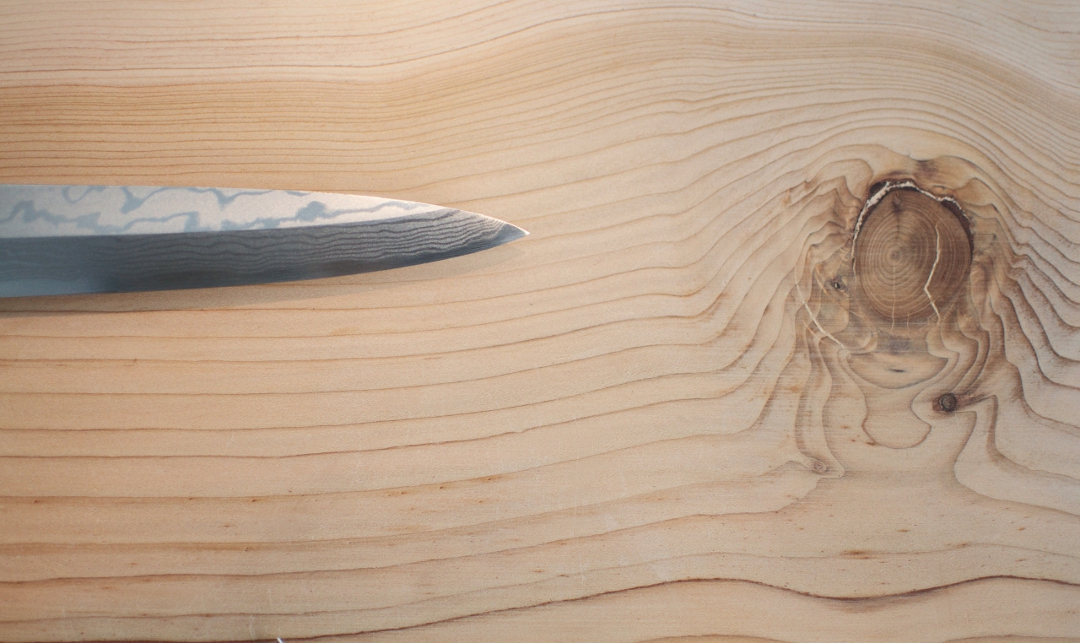
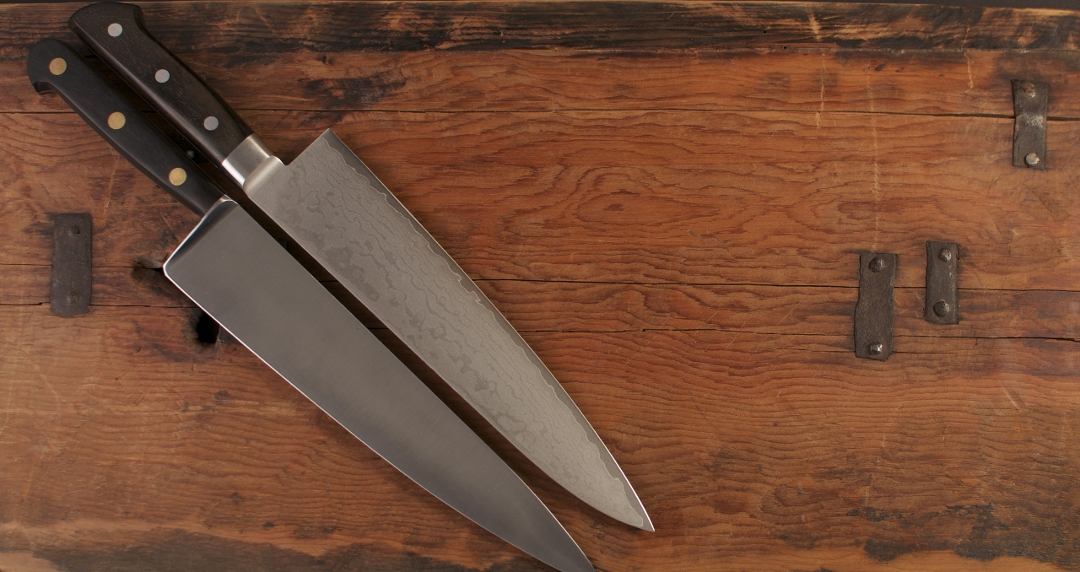
The first in a series of articles on the Japanese knife.
The newest member of the western double bevelled family of culinary knife makers is Japan. Different from the western traditions, Japan has a more artisanal approach to their culinary cutlery industry.
Throughout Japanese society the skill of the craftsman is recognized, rewarded, and encouraged. No matter if it is woodworking, weaving, pottery, lacquerware, or even blacksmithing, Japan has nurtured craftsmanship to levels unfamiliar to us in the West. In Japan, the very best craftsperson in a given discipline can be recognized as a living national treasure: Ningen Kokuho.
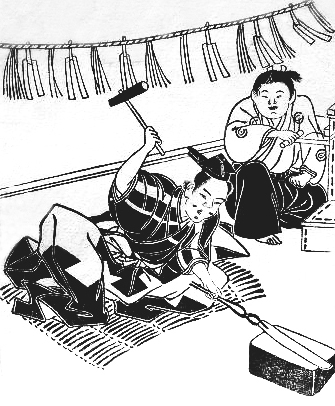
The traditional Japanese culinary knife is based on a blade design that has a single bevelled cutting edge to one side (Kataba) and is flat (or slightly convex/Urasuki) on the other. From this blade design comes a great variety of shapes, thickness, lengths, and tip curves/angles. Some of these blade designs are as old as a thousand years, such as the Gishiki Bocho, a fish-filleting knife that is still used in Shinto rituals.
Single bevelled Japanese knives (Wa-Bocho) are, for the most part, designed to cut as you pull (hiki) the blade towards yourself. Western cutlery blades are designed to cut forward or in a chopping/rocking motion using all parts of the cutting edge depending on what needs to be cut. In Japan the culinary knife is used more to complete or present while in the west we use the knife more to prepare or at the beginning of a recipe. This difference is significant and has in part been lost on many of Japan's knife makers. Their focus on sharpness dominates their knives while failing to appreciate how demanding the "prep" of a western kitchen can be. Our differences in understanding each others traditions are many. For example, signs of a process such as hammer marks and blackened blades have been embraced as confirmation of craftsmanship, while in Japan these same signs can indicate a state of incompleteness.
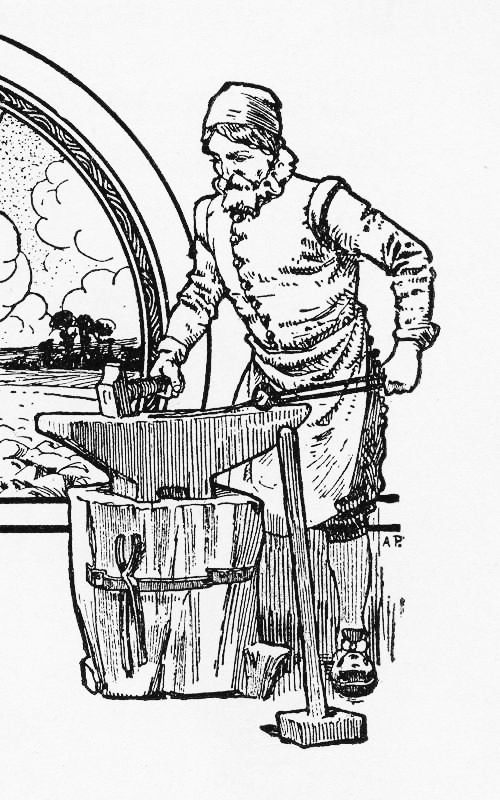
The contemporary Japanese knife making industry is driven by large business concerns, such as KAI, who is equal to the task of competing and pushing standards onto the German production powerhouse based mostly in China. In addition a long standing established network of very skilled medium and small sized companies (of which only a very few can truthfully claim a real historical connection with the sword making traditions of Japan) and most importantly the independent blacksmiths are the core of today's Japanese knife makers.
What created the interest in Japan to make western knives (Ryoba) was not a chance occurrence or sudden inspiration, but rather a decision responding to market opportunities beginning in the Taisho Period (1912 to 1926) but imposed in the 1950s. The question early on was what blade shape should be used for these new kind of knives. In the end Japan, embraced the K-Sabatier double bevelled blades of France with their black handles and three rivets and, their slim, long and graceful cutting edge. Of all the Western nations Japan had come to know, France was favoured by the Japanese for its culture and especially its cuisine. Given the appreciation of French cuisine, the choice was clear, and it remains so to this day.
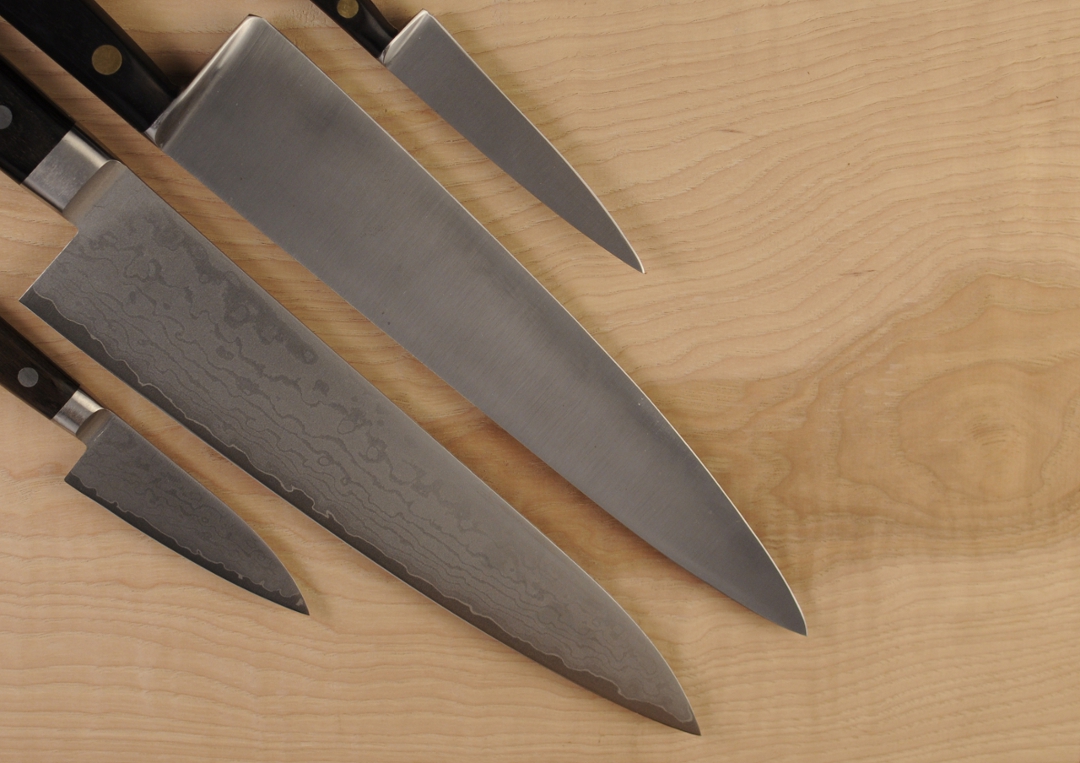
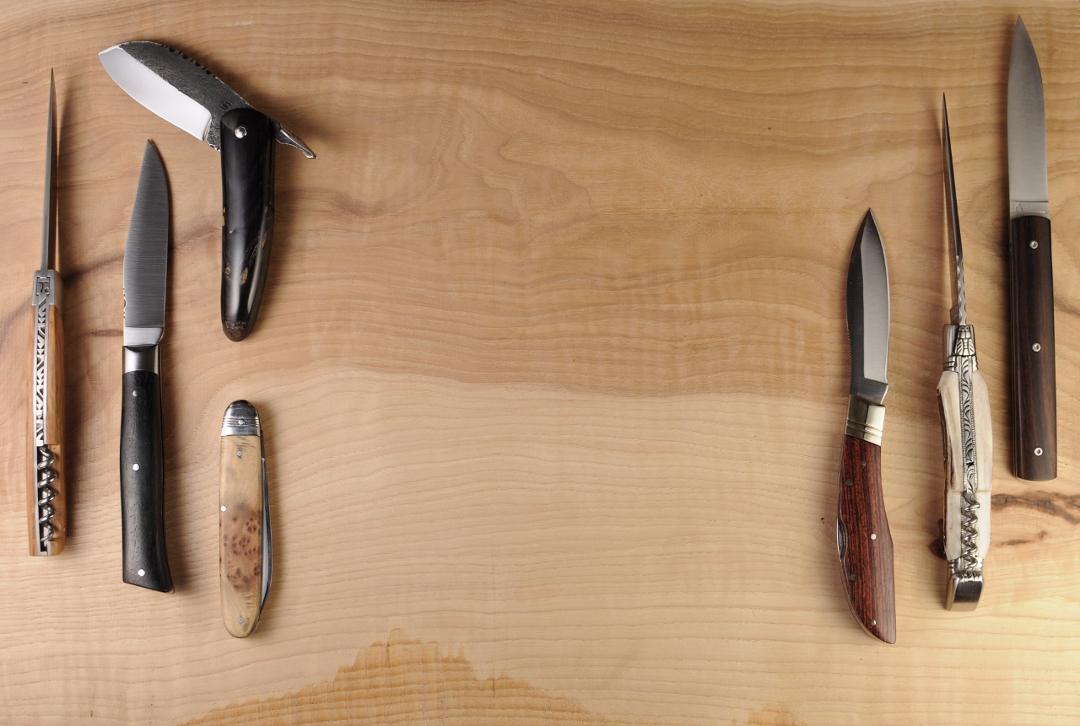
There was a time when everyone had a pocketknife. Women, men, young, old, everyone—the difference was mostly the number of blades. For instance, children's knives often had more than just a blade, because it was something useful for play. For girls or boys, they were called jackknives or penknives. Old folks, especially men, had whittling knives or vest pocketknives, often with a single blade, used for pipes or food—it didn't matter. Women had knives too, carried in purses, wrapped in head scarves, or stuffed in dress pockets.
Pen, jack, or pocket, these knives were always practical, and often they were beautiful. All are forgotten now, because we now think that if you carry a knife you are carrying a weapon. Currently, the favorite is a single action flip blade pocket clip knife—which has more to do with drama than design or a skilled craftsman's control of his materials.
However, a simple folding blade (known as a friction folder) has been used since Roman times and was always viewed and valued in everyday life. It never was, nor in this context will it ever be, a weapon. It is an eternal tool. It never needed to be complex, only concerned with performance and representing the old ways: skill, tradition, and design. Always small, a piece of well executed pocket jewelry.
You don't need a large blade, you need a well-crafted blade, from where, by whom, and made of what, all account for its value in the endless needs of the day. It is wonderful to carry something that is well made and feels great in your hand.
Pocket jewelry should be a demonstration of skill, or a representation of a tradition or story. It needs to be small in size so it can be a carried in the pocket or purse. A truly well crafted presence is not always available and seldom of practical personal use at the same time. However, something small, something beautiful, something that can be useful—well now, that deserves some consideration.
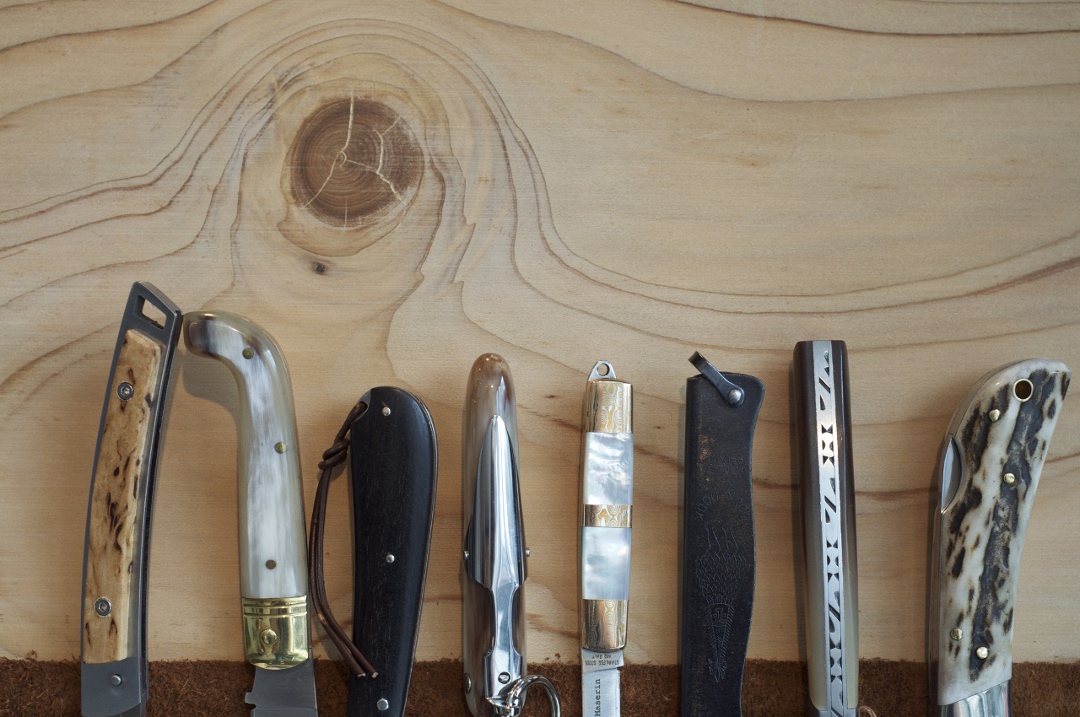
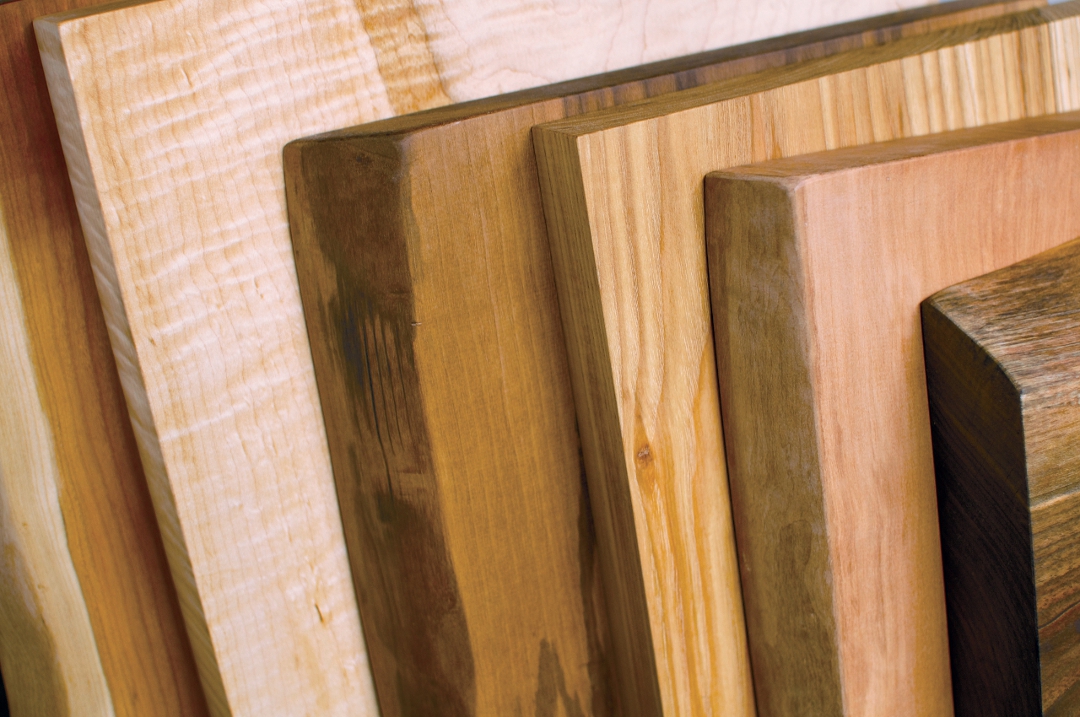
The very best surface for your knife to cut on is wood. With proper care it may also be the healthiest (see notes.) Tight-grained hardwoods are the best for food. We love maple, but there are a variety of other hardwoods that are just as good, and we always have a variety.
All our boards are single pieces of wood, either live edged (with the original outer edge shape of the tree) or trimmed edges. We do not glue or laminate the boards we sell. Our boards vary in thickness from 3/4 of an inch up to 3 inches. Their sizes can range from 6 inches up to 23 inches in width and from 10 inches up to 50 inches in length. But no matter their thickness, widths, or lengths, our selection of boards is ever changing and each one is unique.
http://faculty.vetmed.ucdavis.edu/faculty/docliver/Research/cuttingboard.htm
http://www.news.wisc.edu/releases/1107.html


hacher&krain is committed to supporting the culinary cutlery skills, interests, and passions of all those who cook. We have spent years building working relationships with knife makers from around the world. We have traveled to and spent time with makers from: France, Finland, Japan, Germany, Italy, Spain and beyond. We learned first hand about their manufacturing techniques and traditions. This experience translates into a collection that reflects their craftsmanship and control over a variety of materials used to make their culinary knives. Ultimately this effort provides for you, our customers, an informed overview of your cutlery options, giving you the ability to choose based on understanding the best option for your needs and your budget.
At hacher&krain we do not sell any of our knives online. You can't judge a knife by its picture. We know you must hold a knife before you buy it. We encourage you to come by our shop, where we will be happy to help you with your journey on building a personal, proper knife collection based on skill, craft, quality, and price.
The idea that we sell you a knife, plus an implied ongoing financial relationship to maintain it, just does not sit right with us. Sharpening is not a mystery; it is a skill you can learn, but it takes time and practice. If you are not comfortable with the idea of sharpening your knives, we are just as happy to help.
Our policy is simple: if you bought a knife from us we will sharpen it for you at no cost, no matter how many knives you bring by at a time. If you did not purchase your culinary knife from hacher&krain and you want it sharpened, we will do so one at a time, still at no cost*. We typically take two to four working days.
If you want to learn we have a number of approaches that all begin with a trip to Lee Valley. Sharpening is a great meditation and being able to maintain a tool that is a useful part of your daily life just makes sense and we are happy to help.
* We do not sharpen bread knives not purchased from hacher&krain. In addition, there is a real difference between sharpening a knife and re-profiling a damaged blade. If you did not purchase your knife from hacher&krain and your blade needs to be re-profiled, depending on what condition it is in, we may not be able to help you, but we will advise you of what can be done and refer you to a company who can.
